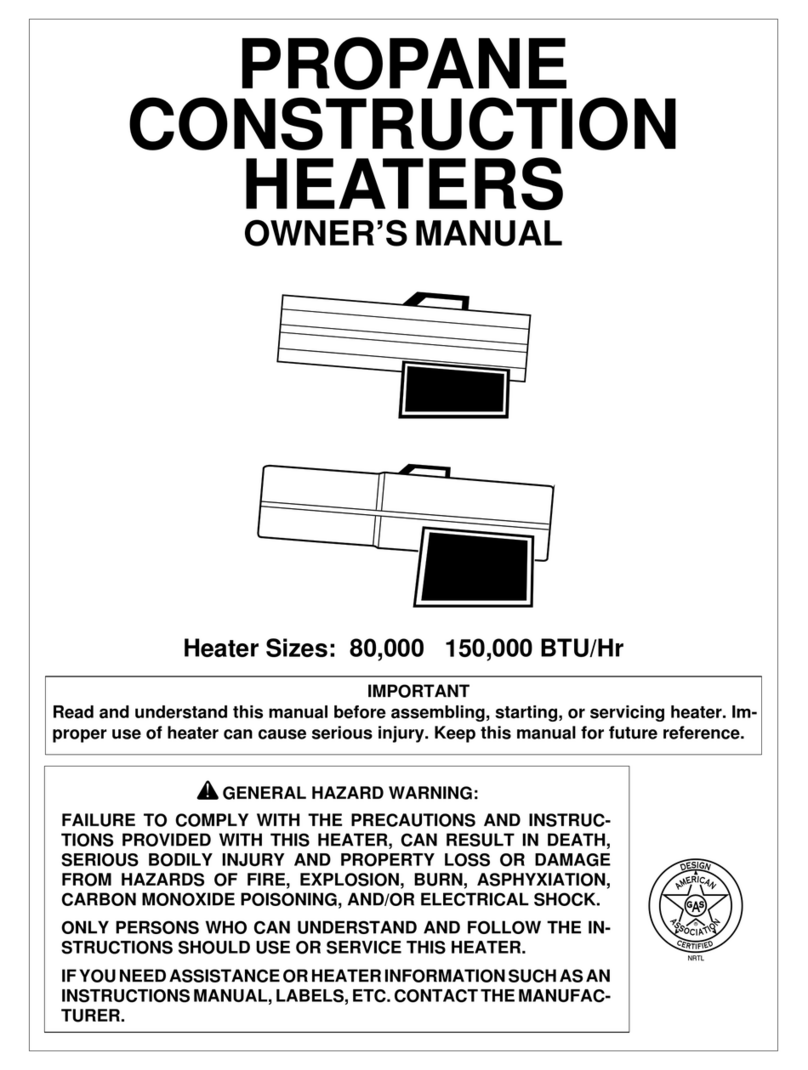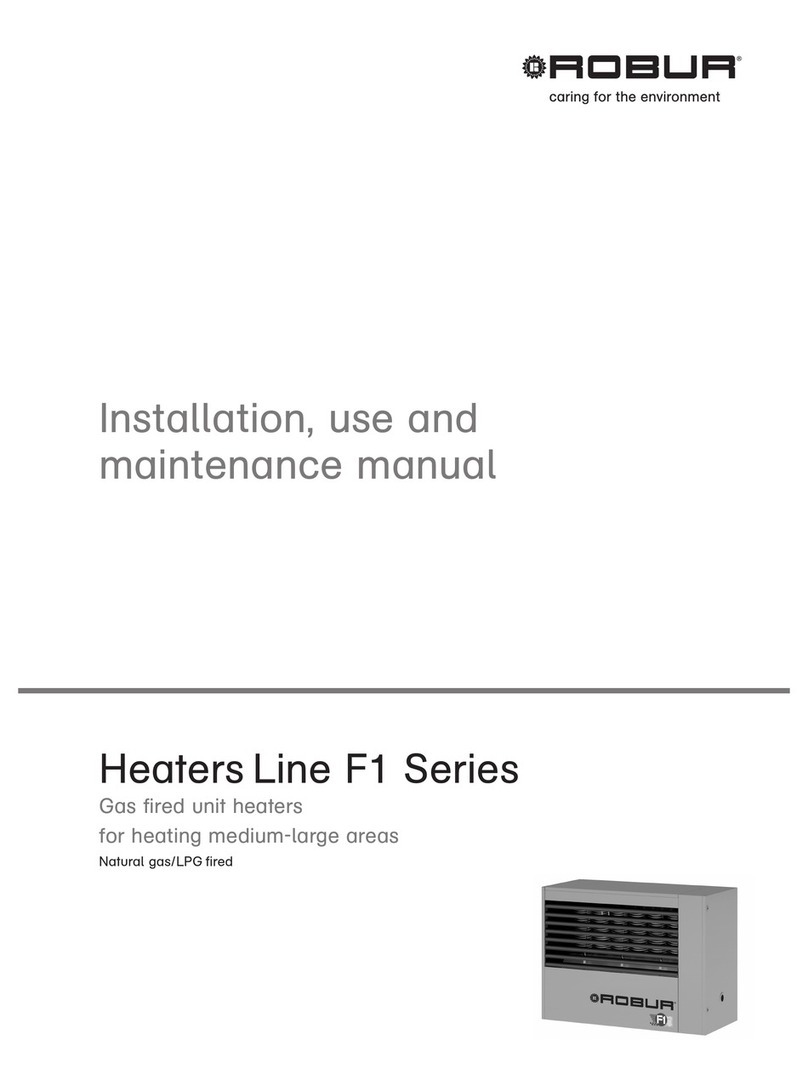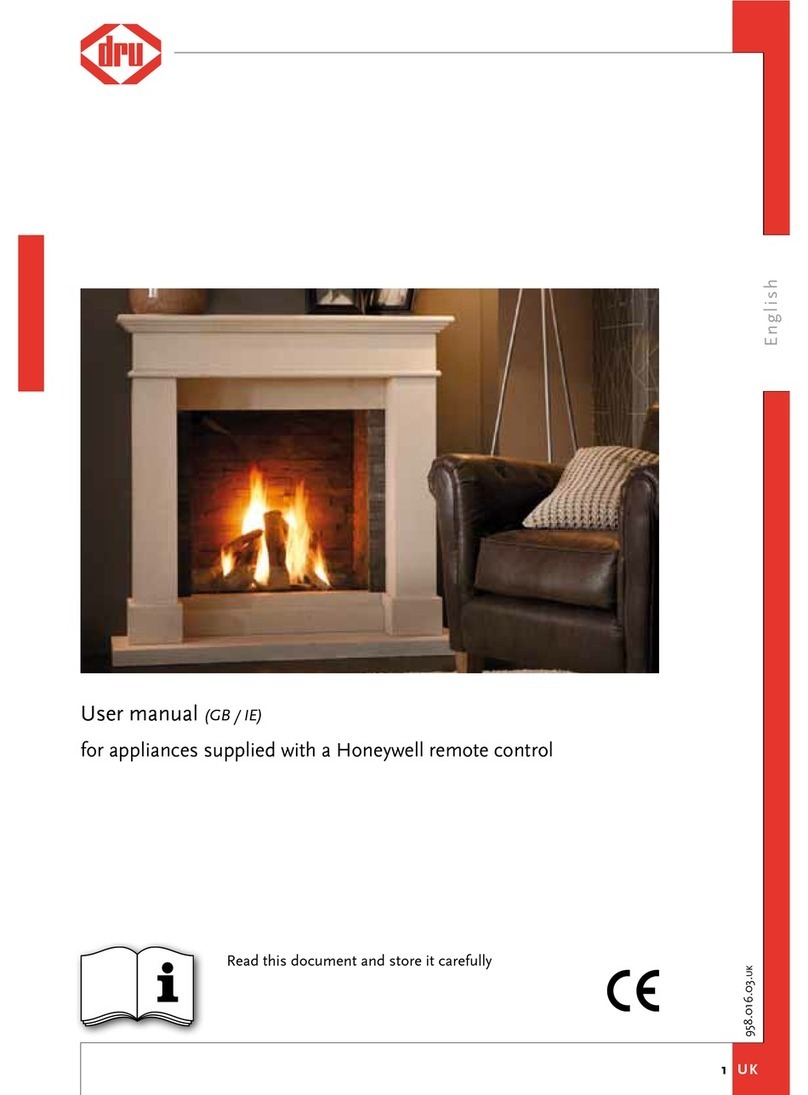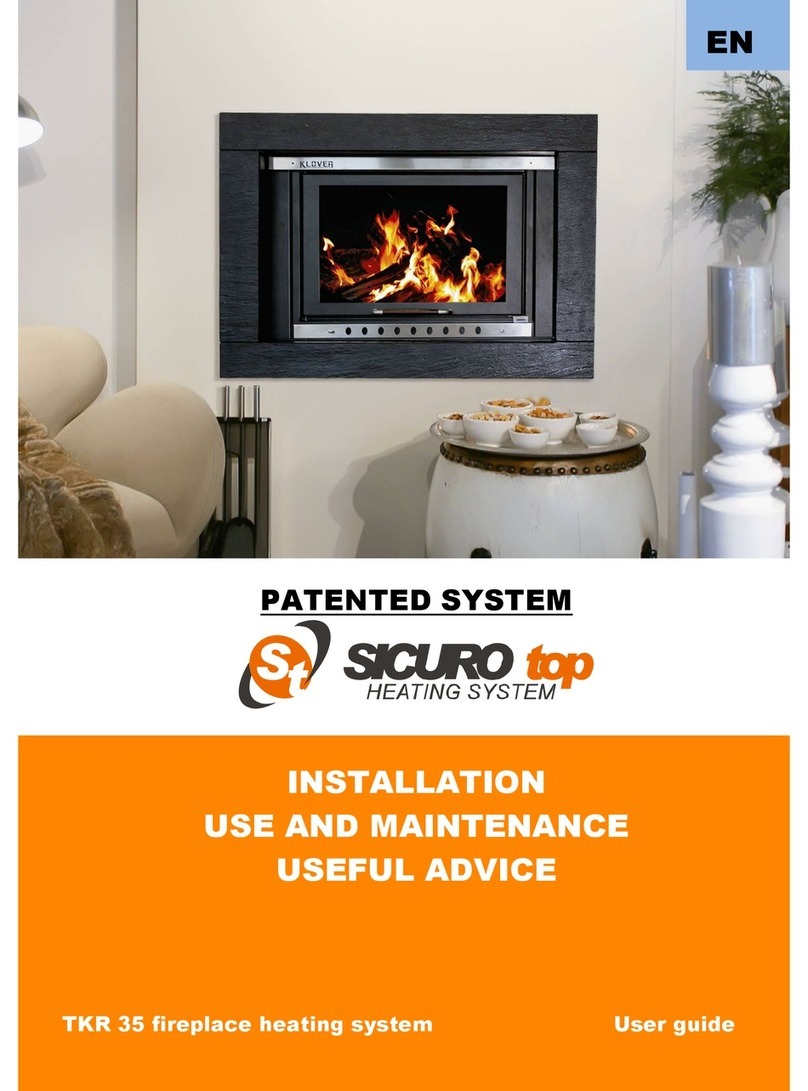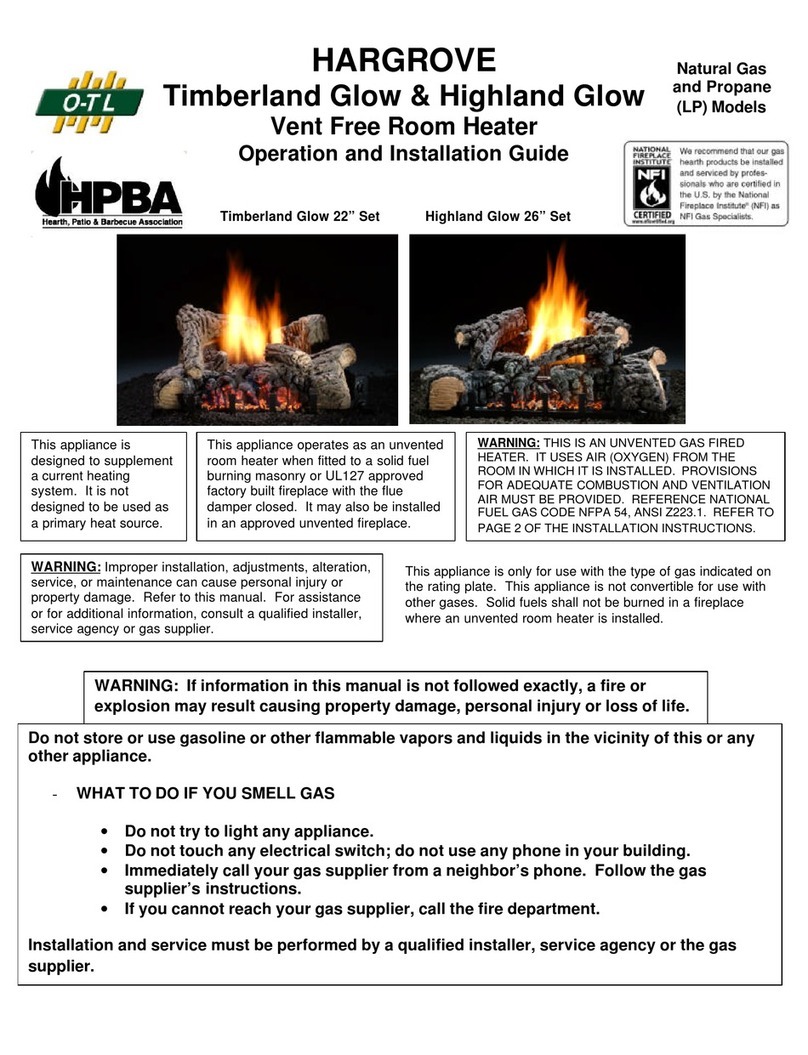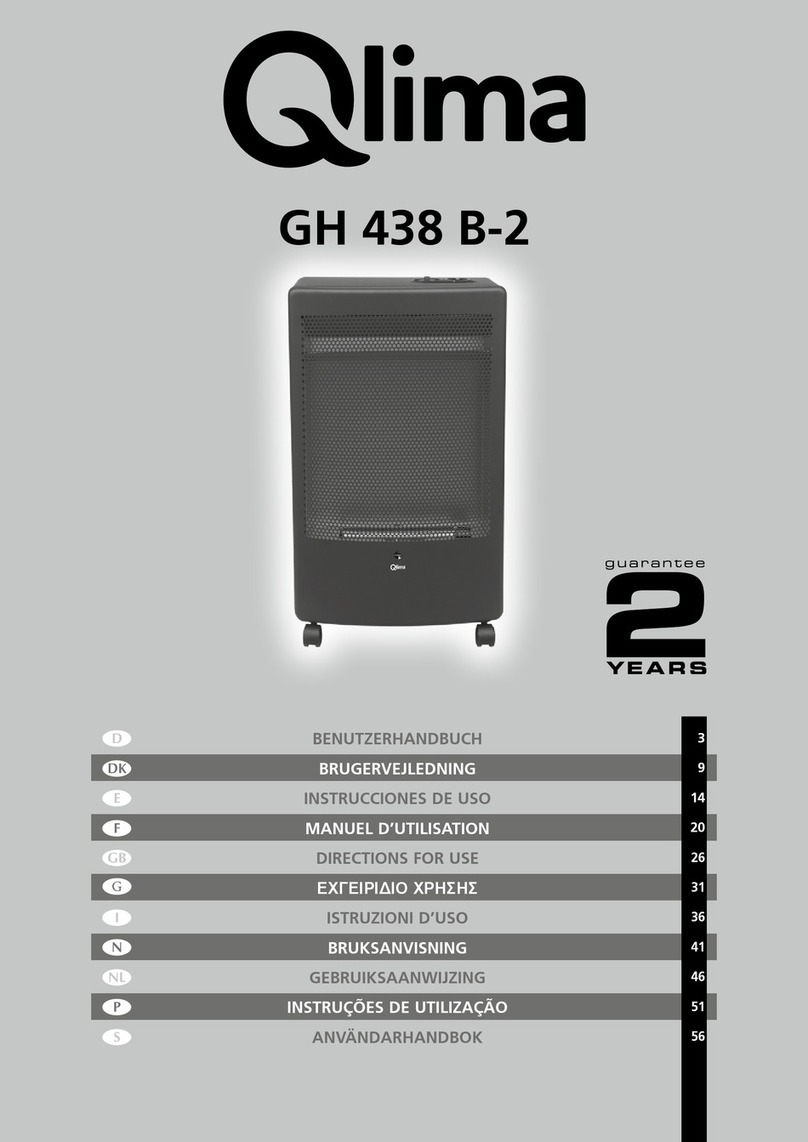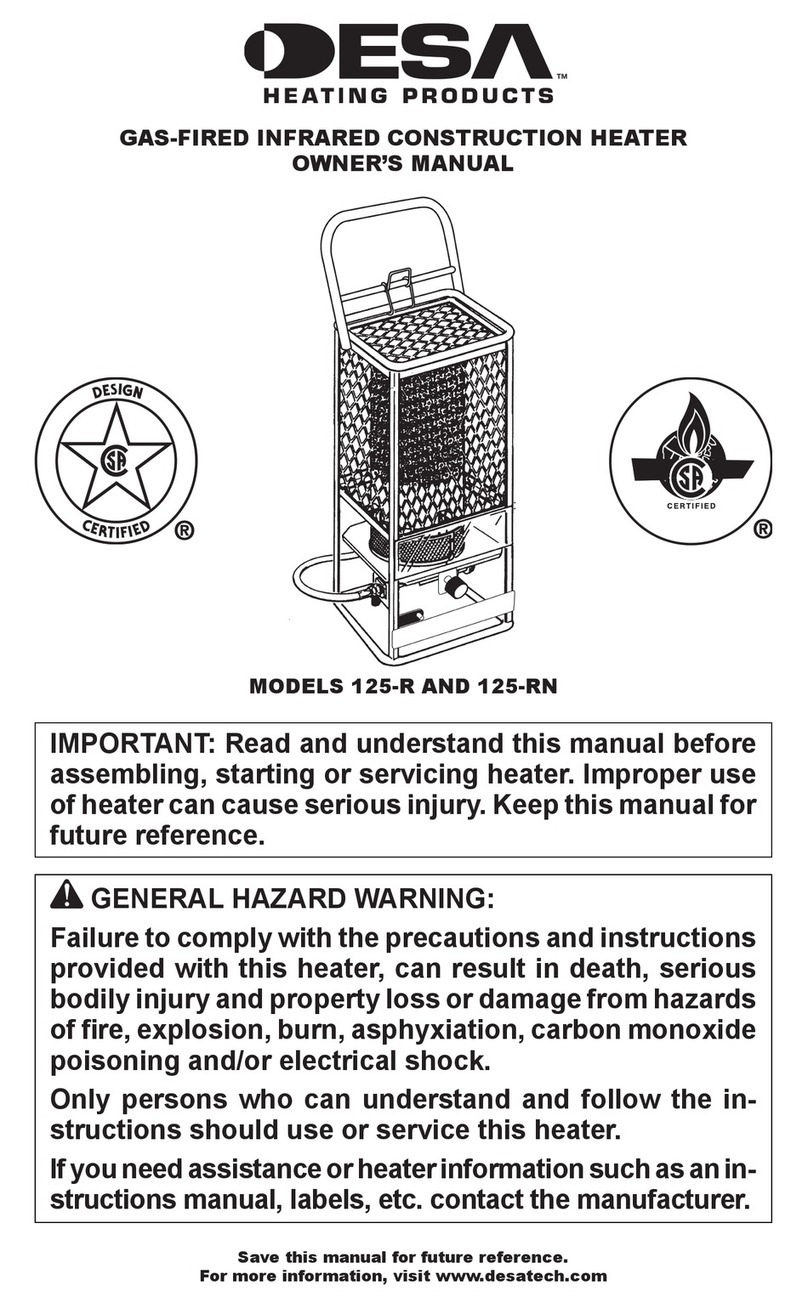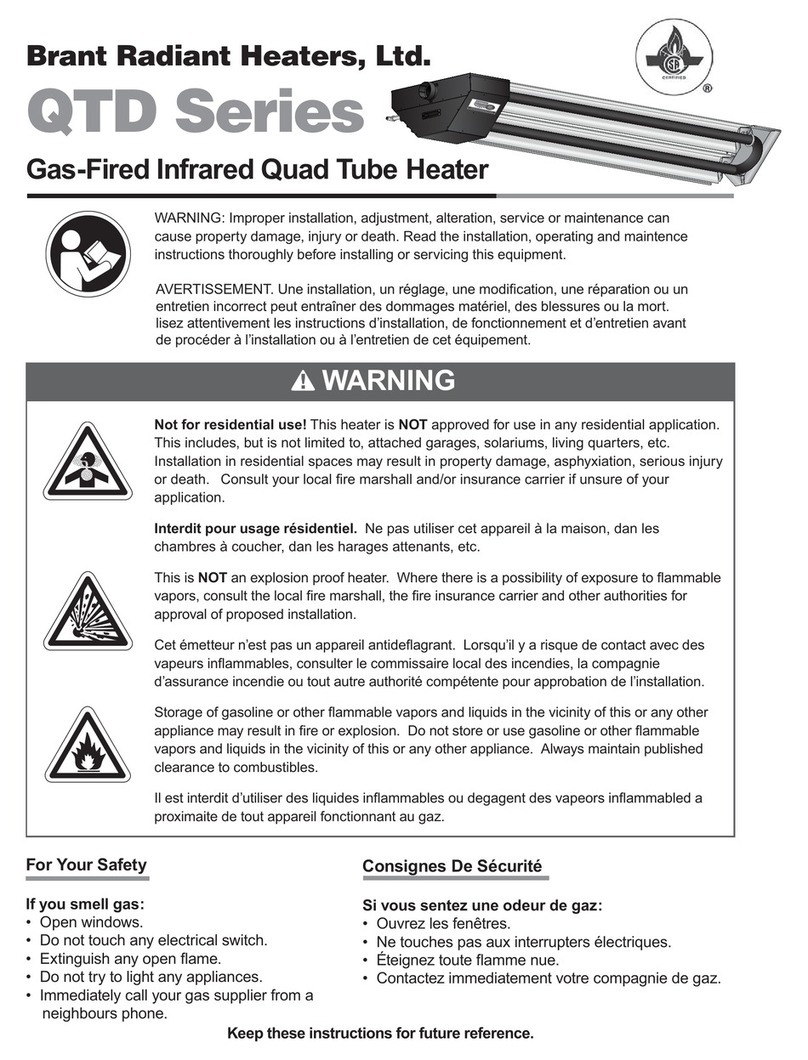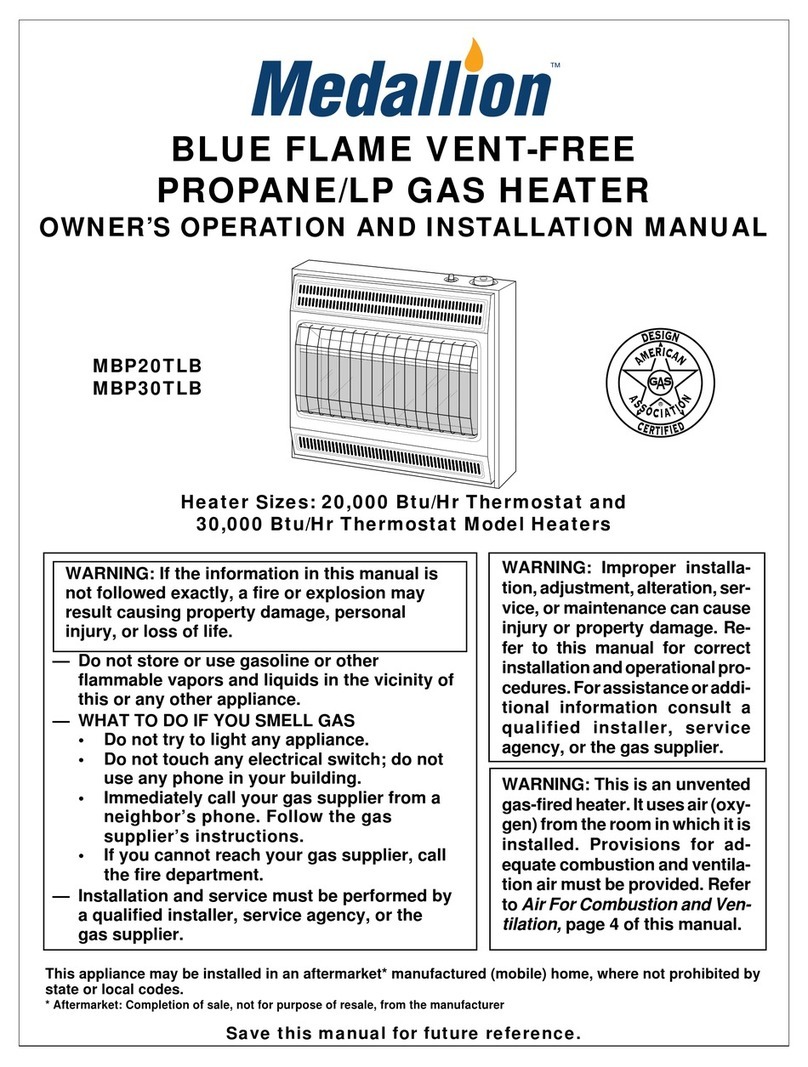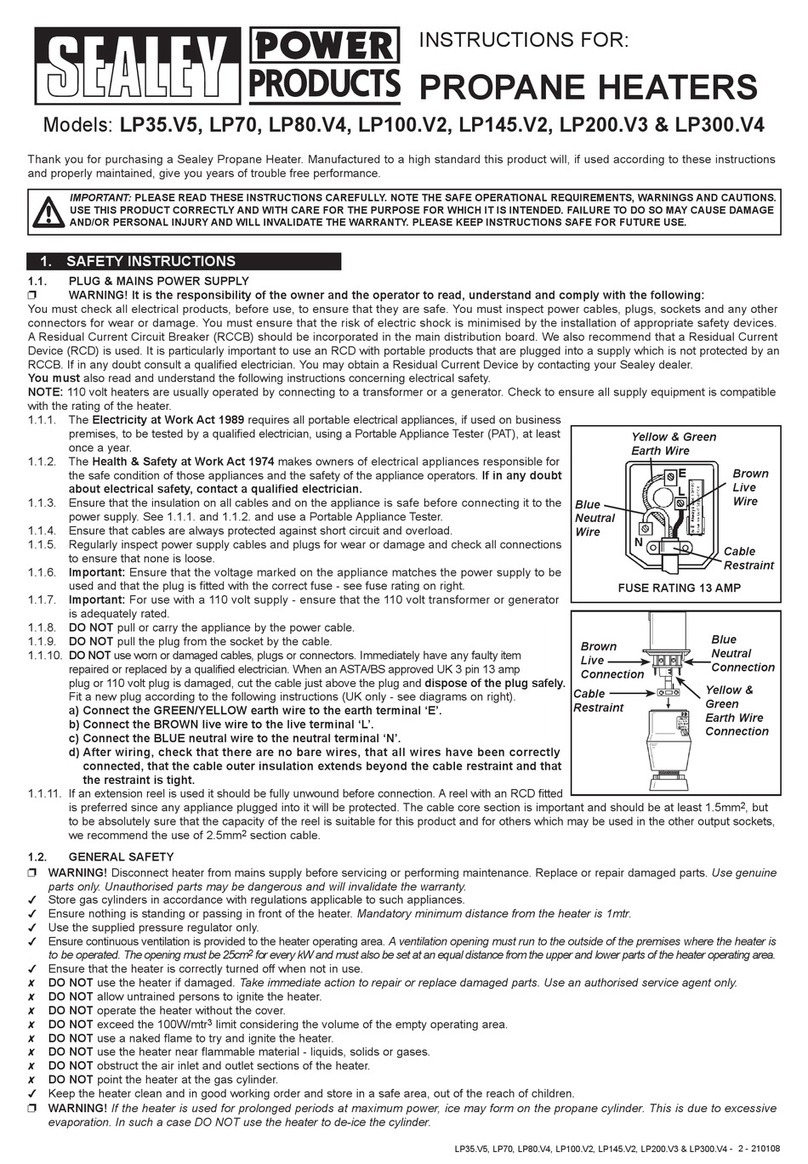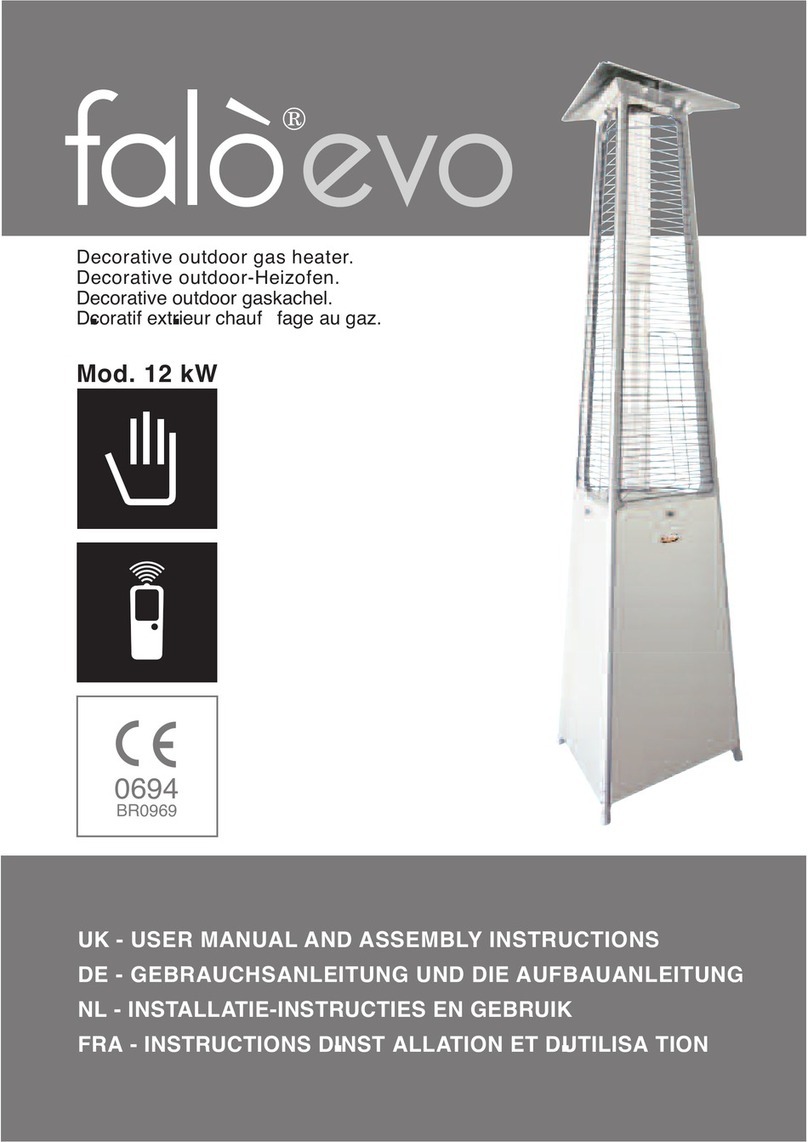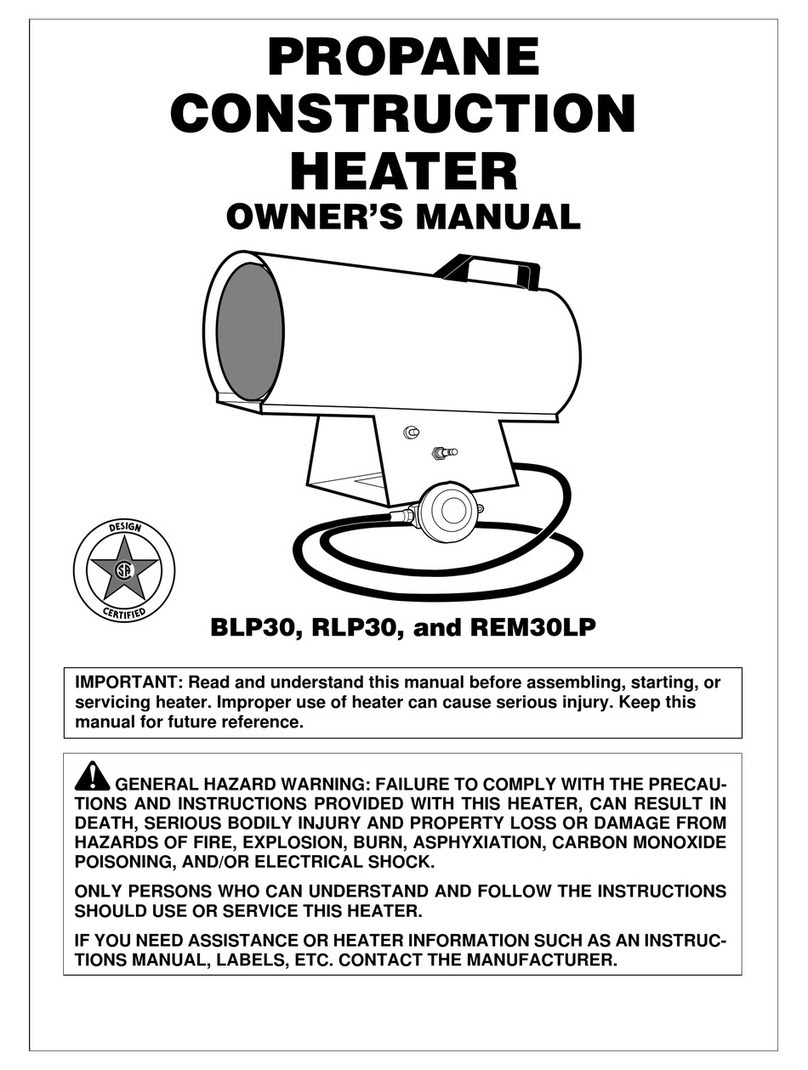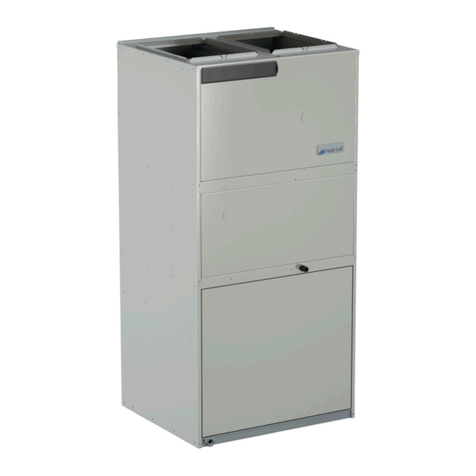
Venting
The venting system is an integral part of the appliance,
The venting system must not be modified in any matter
other than what is specified in these instructions.
This appliance should be installed in a location such that
the vent outlet is located in the following manner:
1. Distances to windows that open, building openings, or
public walkways should be consistent with the National
Fuel Gas Code Z223.1 or CAN/CGA-B149.1 & .2.
,For U.S. installations, the vent system shall terminate
a minimum horizontal clearance of 4' from electric
meters, regulators, and relief equipment. For installa-
tions in Canada, refer to the current CAN/CGA-B149.1
& .2 or with the authorities having local jurisdiction.
3. Flue products will not cause degradation to building
materials.
The unit contains an exhaust blower. The blower draws the
combustion products out of the heat exchanger together
with dilution air and forces the mixture from the unit to the
outside. No special provisions are required for supplying
air for combustion, nor is a chimney required.
The vent outlet must be extended (see Vent Pipe Instal-
lation on page 6).
The venting system is designed for proper operation under
all weather conditions and for winds up to 40 miles per hour.
Existing Venting Systems
When an existing furnace is removed or replaced, the
original venting system may no longer be sized to properly
vent the attached appliances. An improperly sized venting
system can result in spillage of flue products into the living
space, the formation of condensate, leakage, etc. Refer to
the WARNING box in the next column for proper test
procedure.
[, WARNING
CARBON MONOXIDE POiSONiNG HAZARD
Failure to follow the steps outlined below for each
appliance connected to the venting system being
placed into operation could result in carbon monox-
ide poisoning or death.
The following steps shall be followed for each appli-
ance connected to the venting system being placed
into operation, while all other appliances connected to
the common venting system are not in operation:
1. Seal any unused openings in the common venting
system.
,Visually inspect the venting system for proper size
and horizontal pitch, as required in the National
Fuel Gas Code, ANSI Z223.1/NFPA 54 (latest
edition) or the CSA B149.1, Natural Gas and
Propane Installation Codes and these instructions.
Determine that there is no blockage or restriction,
leakage, corrosion, or other deficiencies which
could cause an unsafe condition.
,As far as practical, close all building doors and
windows between the space in which the
appliance(s) connected to the venting system are
located and other spaces in the building.
4. Close fireplace dampers.
,Turn on clothes dryers and any appliance not
connected to the venting system. Turn on any
exhaust fans, such as range hoods and bath-
room exhausts, so they are operating at maxi-
mum speed. Do not operate a summer exhaust
fan.
6. Follow the lighting instructions. Place the unit
being inspected in operation. Adjust the thermo-
stat so appliance is operating continuously.
,Testfor spillage from draft hood equipped appli-
ances at the draft hood relief opening after
5 minutes of main burner operation. Use the flame
of a match or candle.
,If improper venting isobserved during any of the
above tests, the venting system must be corrected
in accordance with the National Fuel Gas Code,
ANSI Z223.1/NFPA 54 (latest edition) and/or the
CSA B149.1, Natural Gas and Propane Installa-
tion Codes.
,After it has been determined that each appliance
remaining connected to the venting system
properly vents when tested as outlined above,
return doors, windows, exhaust fans, fireplace
dampers, and any other gas-fired burning appli-
ance to their previous conditions of use.
#46977A006 Page5
